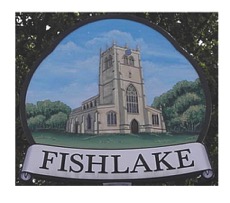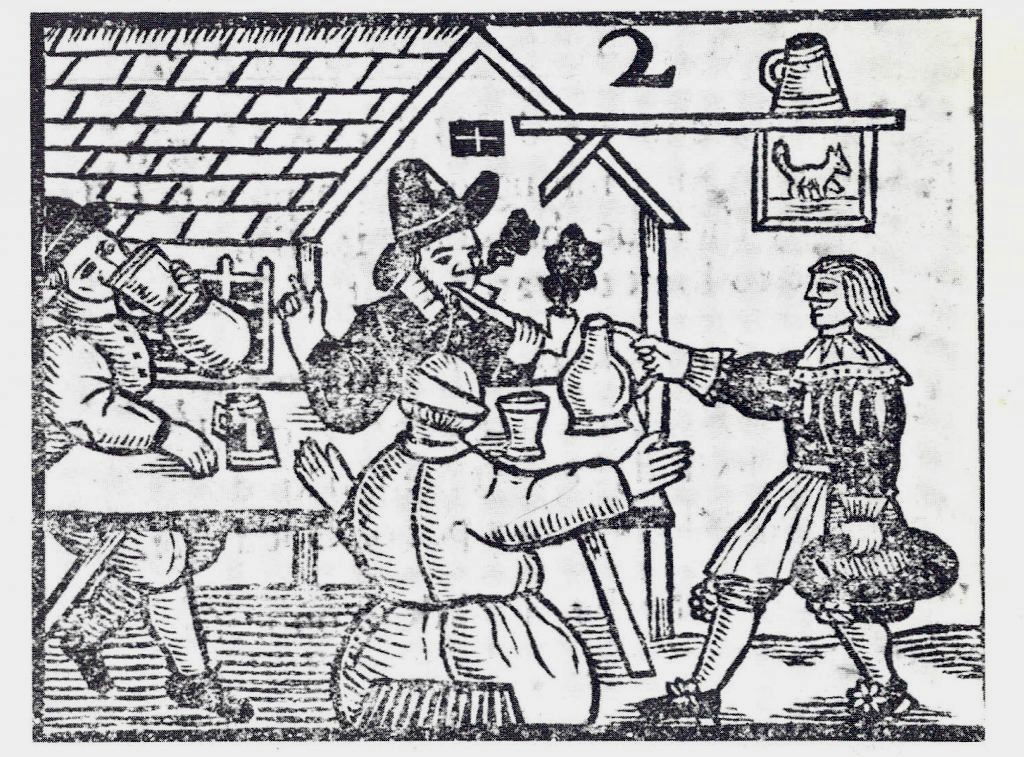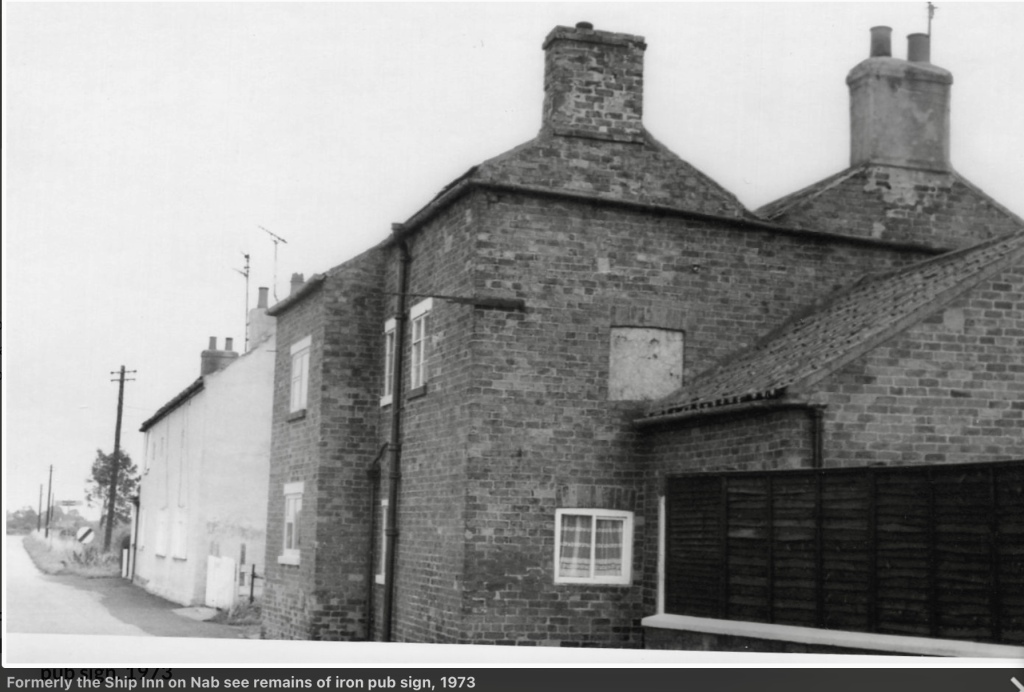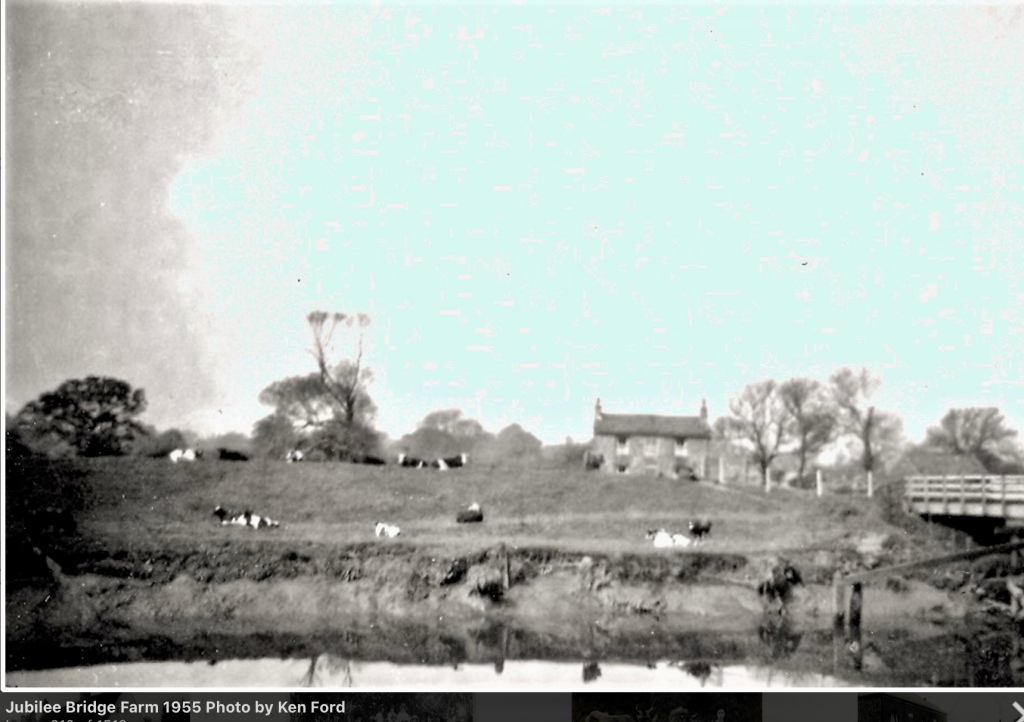Ale Houses and Pubs in bygone Fishlake.
At a Tudor Ale House. From an internet resource.
Ale houses, inns and public houses have been a vital and familiar part of English life especially in rural communities and Fishlake is no exception. Indeed the church and the ale house were at the centre of village life for hundreds of year.
By the 15 th century’s there were three main types of retail outlets as follows: Alehouses (sometimes called tippling houses), where beer and ale were brewed and sold on the premises. Ale was the more ancient of drinks compared to beer, which includes hops, which had been introduced from Flanders’s about 1400. Taverns, where wine as well as beer and ale could be sold. Inns, provided shelter, stabling etc, as well as food and drink.
Legislation 1729 Brewster Sessions at which JP's would be license retailers were instituted.
1828 Alehouse Act. This consolidated previous legislation and redefined the role of the JP’s.
1830 Beerhouse Act. This allowed a householder, assessed to the poor rate, to retail beer from his own house, on payment of 2 guineas. The purpose of this Act was to discourage the sale of spirits. Information taken from The Local Historian’s Encyclopedia by John Richardson.
The first reference to Inns and Ale house in Fishlake is from 1686 when we learn that Fishlake has 4 guest beds and 8 stabling for houses. This appears in Inns and Ale houses returns of accommodation for men and horses held at The National Archives at Kew.
Its appears that prior to 1800 references to the names of an inn has proved hard to find in local records rather the name of the landlord or owner is usually given. This makes it difficult to trace the history of named alehouse, despite the fact that since 1393 Richard third required all publican to exhibit a sign (presumably with a name) outside there establishment. All brewers and sellers has always been heavily controlled However, circumstantial evidence can points to individual residents who were running alehouse. Some examples:
It appears at Church Court in 1594 that during a defamation case we hear that a drinking party was being held in Thomas Temple's house (we can take that as being an alehouse) when Thomas Waite had been subject to slanderous remarks by Richard Clarke and William Coleman. Thomas Temple begin a witness.
From the Bylaw Book in 1597 mentions a Robert Wombersley being paid 6d for a gallon of ale. According to the Constable accounts a town meeting was held at John Padley's in 1689. The Padley's were definitely alehouse keepers as the parish church register refers to a Thomas Padley as an alehouse keeper in 1739 and again in 1746. In 1784 he died aged 82 and recorded as an innkeeper.
We read the Fishlake Account Book and find in 1773 that the Fishlake Mayor’s * feast was held at Frances Saul’s, which suggest he ran a hostelry.
(It is worth noting that for a very short time in the history of Fishlake a Mayor and Alderman’s office was created, Thomas Gabbitas in 1765 and Richard Wharam in 1766 held this office. No doubt there will be a backstory that explains why this office was created in the first place and why it was abandoned so soon).
White Lion. The only evidence I have found proving it’s existence is a newspaper notice from the Doncaster Gazettee of 1788, “August 7th 1788, there was a sale at Mr Heward’s White Lion, Fishlake, of a small copyhold estate at Sykehouse, in the occupation of Widow Bailey. No attorney’s name is mentioned, and the reference is to Mr Richard France, in Fishlake”. Precise location unknown. It is entirely possible that it close and reopened as the Red Lion.
It is worth noting that there is a close and relevant relationship between White Lion and Fishlake Church. On the south side of the exterior of the church tower are carved two badges, a falcon and fetter lock, the badge of Edward IV (1461-1483) a rose summoned by a royal crown, on which a lion is sejant affronte (A lion borne in full face, with his forepaws extended sideways in a sitting position). Edward IV had direct connections to the honour of Conisbrough of which Fishlake was a part. In the Parish Burial Register Mr Robert Heward innkeeper is recorded as dying of fever aged 58 in 1784 so I am assuming his son took over the establishment.
Red Lion. First reference comes from the Baines, West Riding trade directory of 1822 when James Carr was the landlord as he was according to the 1838 White's trade directory. No mention in the census returns of 1841. Location unknown.
Ring of Bells. First referenced in a cash account book belonging to the Allyn’s Charity 1778-1886. In 1774 “to cash spent at the Ring of Bells at three different times”. In Baines, West Riding trade directory of 1822 William Bingham was the victueller as they termed it in those days, this word has maritime origins meaning innkeeper. Location unknown.
In the 1838 White's trade directory George Cheetham was the landlord and again in the 1841 census returns.This is the last reference to this establishment. Interestingly George Cheetham was also practicing as a wheelwright. He was born in 1789 the son of John and Hannah, his father was also a wheelwright. George married Elizabeth Bingham in 1834 which may account for him taking over the running of the Ring O Bells. Also worth noting is that the road leading from Pinfold Lane to the front of the Church was recorded in the Enclose Map of 1825 as Cheetham Road.
The sale of the Ring of Bells in 1847 appears in the Leeds Intelligencer of Saturday 07 August 1847 a notice as follows “ Lot 9. All that Public House, called the Ring of Bells, with the Yard, Stable, and Outbuildings thereto belonging, situated in the Town Street of Fishlake aforesaid, and in the occupation of Joseph Downing, and containing by survey, including the site of the said Public House and Buildings…. 0a 0r 10 perch. The sale also gives a clue to its location ie Town Street, which at the time refers to the road now called Main Street.
Hare and Hounds. Currently this the only surviving pub in the village and possibly the longest establish in Fishlake, located right next to the parish church gates. The earliest reference is 1812 mentioned in the Doncaster, Nottingham and Lincoln Gazette of 3rd January 1812. The Baines trade directory of 1822 gives William Briggs (1812-1825 according to the licencing records) as the victueller but by 1838 White's trade directory tells us that Thomas Trimingham had taken over and was still landlord in the 1841 census returns. In the 1851 census George Cook is recorded as landlord but the 1857 Kelly's trade directory has William Cook as landlord, this could be a mistake? By the 1861 census returns Richard Potter is in charge and again in 1871. In 1893 Edmund Westerby is then the landlord as recorded in Kelly's trade directory of that year.
A Walter Terry was landlord according to the 1901 census. By the 1911 census we learn that Walter had retired and Henry Hubberd Fry Terry moved from the Old Anchor to run the Hare and Hounds. By 1915 Henry and Sophia Hicks were the licensees (see notice board over the door in the picture below). After them Mr William Henry Kitching ran the public house until his death in 1955 when his son Jack took over. He was followed by his son, John until 1982, a total 67 years in one family. After John, Geoffrey Firth was landlord until 19th June 1985 when Alan and Jayne Stracey took charge. They left on 14th September 2000 and were succeeded by Anne and John Brabbs and then Mrs Claire Hollings.
Hare and Hounds, Fishlake in bygone days. The board over the door has the Hicks family as innkeeper.
Old Anchor. Recently closed down but the building still remains in situ to be repurposed. According to the licencing records a W Bradford was licensee here until 1793 when Hugh Rowbottom took over. Otherwise the first reference to this establishment is 1822 from Baines, West Riding trade directory when Hugh Rowbottom was the landlord and was still in charge at the 1841 census returns. By the 1851 census returns Joseph Rowbottom, Hugh's son, was landlord, I assume this was his son. Kelly's trade directory of 1857 has Asa Wadworth as landlord but by the census returns of 1861 it was William Waite. Then in 1871 the landlord was Abraham Coates. In 1893 Kelly's trade directory has Edward Spink as landlord.
The present building replaced an early property in 1895 as referenced in Sheffield Independent on Monday 26th August 1895. “The Anchor Inn, at Fishlake has been rebuilt to plans approved by the magistrates, and it is now a very good and convenient house, with good stable accommodation.
Not long after the rebuild a fire broke out in January 1899 the incident was described in the Eastern Morning News on Tuesday 17 January 1899. “ The Fire Brigade was called out to a blaze at Fishlake on Saturday. During a high wind a paraffin lamp exploded in a bedroom at the Anchor Inn. The bedroom was quickly in flames, and before the fire could be checked, part of the building was destroyed. The damage is estimated at over £100”.
According to the 1901 census returns Henry Hubbert Fry Terry was landlord. Alfred James Waite (1905-1911). In 1911 census was landlord Thomas Silvester family kept the pubic house until about 1934 when Mr W Roe became the new landlord. Mr Roe ran a charabanc service from Fishlake to Doncaster from premises at Hay Green. (This business was the forerunner of Roseville Coaches in Stainforth). Landlords after the Roe’s are as follows: Mr John Grey in 1939, Mr Tom Williams, Mr Ambrose Abbis, Mr George Liddell from 1981, Mr Malcolm Greenslade from 1984 , Mr and Mrs J FitzPatrick from 1998, Mrs E Grint, Mr and Mrs M Confield November 2000 and Dee Atkinson.
Old Anchor Inn, Main Street, Fishlake, a few years before it closed. Thanks to Google Earth.
Bridge Foot Inn/ Ship Inn. This establishment was housed in one of the cottages which were build about 1840 on the Nab close to Stainforth Bridge, after it ceased to function as a pub it reverted to a domestic property only. Until recent renovations it retained the bracket that held the pub sign, see picture below. According to the census returns of 1861 the landlord was William Parish. Then in 1871 it changed to Thomas Wolfinden. By the census return of 1891 the inn was renamed The Ship Inn and the innkeeper was James Wagstaff. The 1893 White’s trade directory has Amos Elm as as a beer retailer.
A strange event occurred at the Ship Inn as recorded in the Yorkshire Evening Post on Friday 12 May 1899 as follows “ Mrs Elm the wife of Amos Elm, of the Ship Inn, Little Fishlake, Thorne ( this was a local name for a small collection of houses and cottages within the parish of Fishlake but very close to Stainforth), has mysteriously disappeared from her home. She has been dejected of late, and left home on Wednesday night, leaving a farewell note for her husband for her husband. She was seen to make her way to Barnby Dun Car, Doncaster”. I have no information about the outcome. The 1901 census returns has Thomas Silvester as landlord. About 1910 The Ship Inn closed and the then landlord Mr Tom Silvester moved to The Old Anchor in Fishlake.







